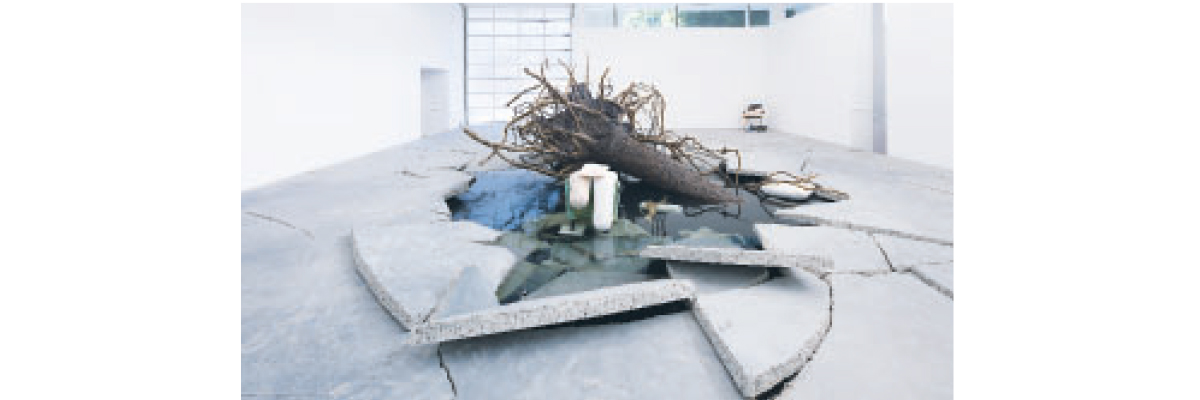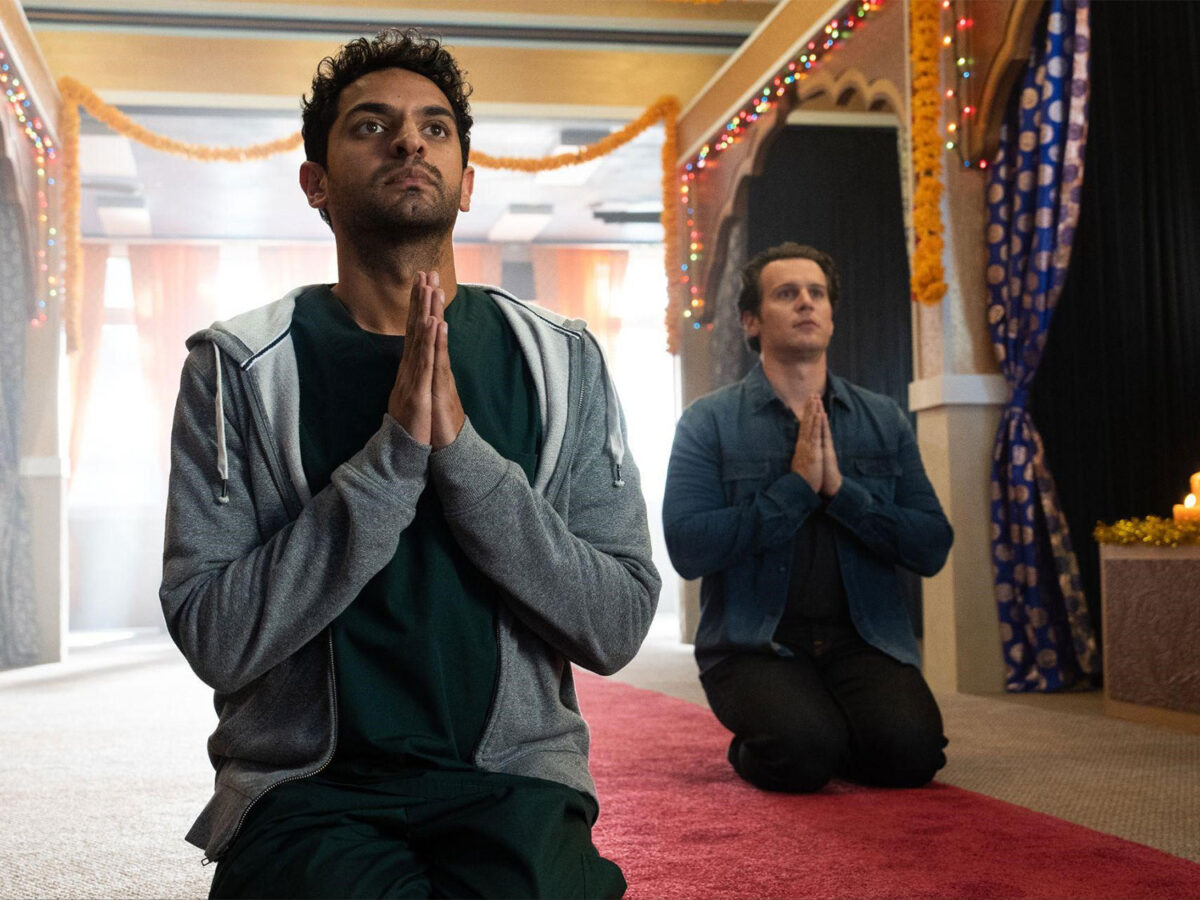The latest exhibition now on view at Gagosian Beverly Hills, which opened this past weekend, is not your typical gallery show. Immediately upon entering the art gallery on N. Camden Drive, the viewer is startled by the uneven concrete floor that looks like a tectonic tragedy or the result of careless wielder of a jackhammer who haphazardly attempted to relayer the slabs. The exhibition “On the Eve of Never Leaving,” featuring new drawings and sculptures by Paris-Based artist Tatiana Trouvé in her first L.A. exhibition, is in fact something quite novel for the gallery – and really, for any local gallery.
“Tatiana’s installation at Gagosian is highly poetic and engaging,” described Deborah McLeod, Director at Gagosian. “We hear visitors gasp when they enter. One first experiences disorientation; the artist swapping indoors for out, memory for reality, the natural world for the man-made. This disruption to the real world creates a surreal dream state experience that reveals the uneasy intersection between humanity and the natural world.”
A highlight of the exhibition is the initial large-scale installation titled “The Shaman,” a patinated bronze sculpture that is cast from an oak tree in Naples, with water coming out of 26 fountains attached to the tree. It’s this unique piece that rests amidst the ruptured concrete floor, partially submerged in a pool of water and sheltering the muddied tangle of roots and a limp stack of patterned cushions carved in marble, granite, and onyx resting tranquilly in the water. In the corner nearby, a small cast-bronze transistor radio sits beside a manhole cover. These objects, though benign, are portals to unseen worlds–the sewers and the airwaves, here and elsewhere, in startling contrast to the room’s tectonic disruption.
The show’s title, “On the Eve of Never Leaving,” is a translation of “Na Véspera de Não Partir Nunca,” the title of a poem by Álvaro de Campos, one of the many heteronyms of the Portuguese writer Fernando Pessoa (18881935), who was known for his many hymns to the existential void.
In Trouvé’s large-scale drawings, installed in a freestanding metal armature, which itself functions as a linear drawing in three dimensions, Trouvé assesses the relationship between memory and material in this hauntingly beautiful series, pitting the ceaseless flow of time against the remarkable endurance of common objects. Combining fragments from both natural and constructed ecosystems, she creates ethereally familiar realms in which forest, street, studio and dreams coalesce.
To make one of the series of drawings, “Les dessouvenus,” Trouvé first plunges large sheets of colored paper into bleach, then allows the unpredictable, caustic boundaries of each stain to provide a loose structure for complex “environmental dramas” that she draws in pencil. In another series, “The Great Atlas of Disorientation,” she uses watercolor to recreate the bleached effects in Les dessouvenus, the results recalling smoke, halos, ghosts or mushroom clouds.
According to the gallery, “The Great Atlas of Disorientation series thus underscores the impossibility of replicating a succession of chance events.”
On view through Jan. 11, 2020, this uncanny exploration of a collapsing past and future is open to the public Monday through Saturday from 10 a.m. to 6 p.m.







